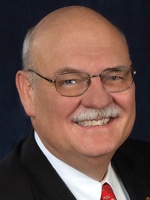November 2020—Adam Barker, PhD, D(ABMM), was ready to call it quits. For weeks, he had been working to bring saliva-based SARS-CoV-2 testing to ARUP Laboratories and the University of Utah. Dr. Barker, director of ARUP’s COVID-19 rapid response lab, and his colleagues had done studies comparing saliva with nasopharyngeal swabs, which seemed to be following the flight of the passenger pigeon out of existence. They had wrestled with the FDA over emergency use authorization. They’d developed their own transport media, since that supply was also becoming extinct. He had begun building kits for saliva collection and figured out what sample size worked best. Kits had been delivered to collection sites on campus, and staff were being trained in their use. He was, in other words, creating a laboratory success story, one of the many that have been written since March. He was not basking in this fact. “I have to tell you: I lost so much sleep because of saliva,” says Dr. Barker, who is also director, ARUP Institute for Clinical and Experimental Pathology.
Read More »November 2020
Checklist, CLIA line up on COVID reporting
November 2020—It’s been well understood since the Ten Commandments that rules that appear simple in theory can be fiendishly complex or even impossible to execute. The pandemic is providing a perfect example of that in the laboratory world, but with added twists, at least for now.
Read More »Three at AACC: rapid STI testing, toxicology, biosafety
November 2020—Point-of-care testing for sexually transmitted infections, toxicology investigation, and biosafety practices are three of the hundreds of topics that will come online next month during AACC’s virtual annual meeting.
Read More »Fewer urine cultures — series of changes add up
November 2020—Five years after putting in place a urine reflex algorithm at Barnes-Jewish Hospital in St. Louis, and many tweaks later, Melanie Yarbrough, PhD, D(ABMM), D(ABCC), has tips to share on how to increase the odds for success in reducing the number of urine cultures.
Read More »At POC and in lab, 2 new checks on SARS-CoV-2 testing
November 2020—The CAP released in September its proficiency testing program for SARS-CoV-2 antigen testing, with the first shipment to laboratories set for Nov. 30. It also introduced recently a Quality Cross Check program that makes it possible for labs performing nucleic acid amplification testing for SARS-CoV-2 to monitor performance across multiple instruments, in compliance with the CMS directive prohibiting proficiency testing on multiple instruments.
Read More »Compass on COVID: What test for whom and when—lab leaders talk
November 2020—Testing saliva, stocking up, and expanding capacity were top of mind when members of the Compass Group convened by Zoom on Sept. 1 for a second COVID-19-related call with CAP TODAY publisher Bob McGonnagle. Antigen testing, too, came up, and the question to answer there, said Susan Fuhrman, MD, of OhioHealth, is why the test is performed and what will be done with the result. That and more—testing for patients undergoing treatment for cancer, flu season—were up for discussion. Others on the call were Greg Sossaman, MD, of Ochsner; Lauren Anthony, MD, and Heather Dawson of Allina; Sarah Province and Julie Hess of AdventHealth; James Crawford, MD, PhD, of Northwell; Stan Schofield and Robert Carlson, MD, of MaineHealth; Sterling Bennett, MD, MS, of Intermountain; John Carey, MD, of Henry Ford; and Pamela Murphy, PhD, APRN, of MUSC Health. The Compass Group is an organization of not-for-profit IDN system lab leaders who collaborate to identify and share best practices and strategies. (For our coverage of their first call with CAP TODAY, see “Compass points chart the pandemic,” September 2020.) Here is what they told us on Sept. 1.
Read More »IT in a pandemic year, now and what’s ahead: interfaces, analytics, telepathology—seven weigh in
November 2020—Information technology from a COVID-19 perspective. What has been the impact on IT, and what change is yet to come? That is what seven people who met virtually on Sept. 10 talked about with CAP TODAY publisher Bob McGonnagle. They are James Harrison, MD, PhD, of the University of Virginia; J. Mark Tuthill, MD, of Henry Ford; Stephen Hewitt, MD, PhD, of the National Cancer Institute; Bob Dowd of NovoPath; Michelle Del Guercio of Sunquest; Curt Johnson of Orchard; and Brian Gunderson of Roche. You will see here, in the conversation that follows, where their focus is as the crisis continues.
Read More »AMP case report: Role of lymphoma sequencing panel in diagnosis of pediatric-type follicular lymphoma
November 2020—Pediatric-type follicular lymphoma (PTFL) is a rare form of lymphoma that was recognized as a new diagnostic entity in the revised 2016 WHO Classification of Tumours of Haematopoietic and Lymphoid Tissues. The classic features of PTFL include male predominance, localized stage I lymphadenopathy, blastoid morphology, high proliferation index, and exceedingly good response rate to local excision.
Read More »From the President’s Desk: Gratitude all around
November 2020—Despite the circumstances that forced us to shift to a virtual event for our annual meeting this year—and my sincere hope we will never have to do so again—I couldn’t be more proud of how everyone in the CAP worked hard to adapt to the COVID-19 pandemic and ensure the best experience possible for all of our pathologists. As I write this, the annual meeting has just concluded. While every conference we hold requires tremendous effort, this was a different event, a different horse race. The work and persistence that went into making our virtual meeting a success were extraordinary.
Read More »Clinical pathology selected abstracts
November 2020—Smoking is a leading cause of death in the United States and is associated with many postoperative complications, including increased transfusion needs. Toxins in tobacco that create free radicals that damage the arterial walls and make them more susceptible to rupture and bleeding may be the link between smoking and surgical bleeding. Smoking also impairs tissue healing after surgery, most likely due to reduced oxygenation and altered function of inflammatory cells during the healing process. This may impact bleeding risk in the immediate postoperative period. The authors conducted a study in which they queried the American College of Surgeons National Surgical Quality Improvement Program (ACS NSQIP) Participant Use Data File 2007–2016, which contained data from up to 680 U.S. hospitals, to test the hypothesis that smoking is associated with a higher risk of bleeding in various surgical procedures.
Read More »Molecular pathology selected abstracts
November 2020—Sporadic vascular malformations are congenital malformations of arteries, veins, capillaries, or lymphatic vessels, or a combination of these, and are associated with significant morbidity. The majority of them are caused by postzygotic somatic pathogenic variants in oncogenes in the PI3K-MTOR and RAS-MAPK pathways, including within PIK3CA, TEK, MAP2K1, BRAF, and KRAS. Investigators have assessed whether therapeutic agents targeting these pathways should be used to augment or replace traditional surgical management. But because these somatic variants are restricted to cells within the tissue of vascular malformations (VM), it is necessary to conduct genetic testing on the surgically resected tissue to qualify patients for trials of targeted therapies. Approximately 10 percent of cell-free DNA (cfDNA) originates from endothelial cells.
Read More »Anatomic pathology selected abstracts
November 2020—Neuroendocrine neoplasms range from well to poorly differentiated and indolent to highly aggressive. The site of origin in metastatic neuroendocrine neoplasms has therapeutic and prognostic implications. SATB2 is a transcriptional regulator involved in osteoblastic and neuronal differentiation and a sensitive and specific marker of colorectal epithelium. The authors conducted a study to evaluate the expression of SATB2 in neuroendocrine neoplasms from various primary sites and its utility as a marker for determining the site of origin of these neoplasms. SATB2 IHC was performed on 266 such neoplasms, including lung small cell carcinomas (n = 39) and carcinoids (n = 30), bladder (n = 21) and prostate (n = 31) small cell carcinomas, and gastrointestinal/pancreatic neuroendocrine neoplasms of various primary sites (n =145) consisting of well-differentiated neuroendocrine tumors (WDNET, n =124) and poorly differentiated neuroendocrine carcinomas (PDNEC, n = 21).
Read More »Pathology informatics selected abstracts
November 2020—Telepathology is a leading application for digital pathology. The ability to easily share a digital image in practice offers pathology laboratories clinical, operational, and financial benefits. This is best demonstrated by the longstanding success of telepathology in allowing pathologists to remotely perform intraoperative consultations—that is, to read frozen sections. Neuropathologists were one of the first specialists to leverage digital pathology for this clinical use. The authors, all of whom were from the University of Pittsburgh Medical Center, performed teleneuropathology at their institution, which implemented the practice 17 years ago.
Read More »Q&A column
Q. What can laboratories expect to see after a medication such as Narcan is given for an opioid overdose? Read answer. Q. There are conflicting views among my colleagues regarding the meaning of initial competency assessment. Some think that using a training checklist for new staff counts as the initial competency assessment because we are signing off that staff are competent to perform patient testing and report results. Others believe an initial competency assessment is done shortly after training is completed, followed by the mid-cycle/six-month competency assessment and annual competency assessment. Please clarify. Read answer. Q. How do you calculate RDW-SD and RDW-CV values in dimorphic anemia cases on the Sysmex XN-3000? Most of the dimorphic anemia cases report a masked parameter. Read answer.
Read More »Newsbytes
November 2020—As LigoLab was designing a direct-to-consumer portal for laboratory testing early this year, company CEO Suren Avunjian turned his focus to when in 2021 he would release it, not knowing what was around the corner. But as the number of COVID-19 cases grew to pandemic proportions, Avunjian realized he could and should redesign the portal to streamline SARS-CoV-2 testing.
Read More »Put It on the Board
November 2020—In an Association for Molecular Pathology survey, 62 percent of U.S. labs reported using only commercial testing kits with FDA EUA for SARS-CoV-2 molecular testing. Five percent reported using laboratory-developed tests only, 26 percent said they were using a combination of LDTs and EUA commercial kits, and six percent reported using LDTs, IRB-approved/non-EUA assays, and commercial kits. Less than one percent reported using a combination of LDTs and IRB-approved/non-EUA assays or a combination of IRB-approved/non-EUA assays and commercial kits.
Read More » CAP TODAY Pathology/Laboratory Medicine/Laboratory Management
CAP TODAY Pathology/Laboratory Medicine/Laboratory Management







